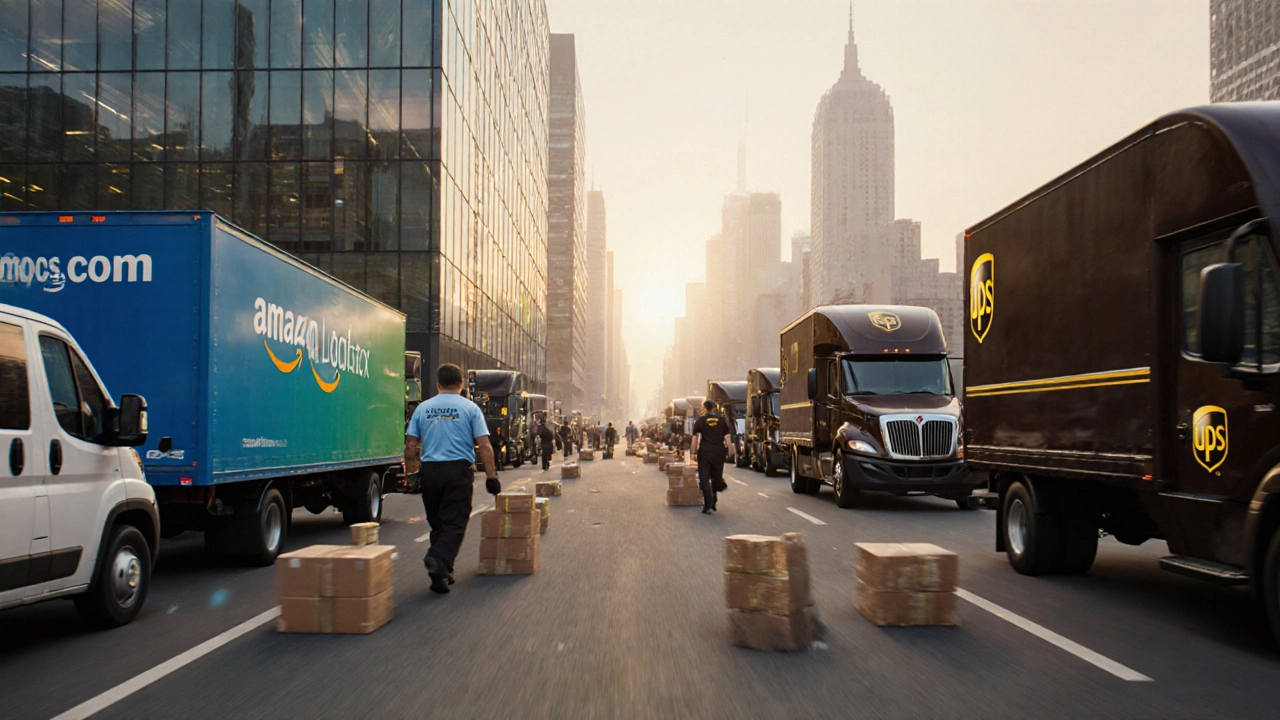Amazon Logistics vs UPS: Who Has the Bigger Network?
Compare Amazon Logistics and UPS across revenue, package volume, fleet, air cargo, and global reach to see which logistics giant is larger.
When talking about delivery volume, the total amount of parcels, pallets or freight moved by a carrier within a given time frame. Also known as shipping throughput, it serves as a quick health check for any courier operation. A higher delivery volume usually points to strong demand, efficient routes, and good customer trust, while a dip can signal bottlenecks in courier service, pricing issues, or mismatched delivery coverage (the geographic area a carrier promises to serve). Knowing how these pieces fit together helps businesses plan better, cut waste, and keep riders happy.
First off, the courier service, the network of drivers, vehicles and routes that move packages from point A to B is the engine behind any volume change. If a service offers reliable door‑to‑door drops, flexible scheduling, and real‑time tracking, customers tend to send more shipments. Next, shipping cost, the fee calculated based on weight, distance, speed and optional services directly influences how much a client will ship. Transparent, competitive rates encourage higher order counts, while hidden fees push business toward cheaper alternatives. Delivery coverage also plays a big role; expanding the service radius opens new markets, boosting volume, but over‑extending without proper infrastructure can cause delays that hurt reputation. Finally, robust logistics management, the planning and execution of movement, storage and information flow ties everything together. Efficient routing software, real‑time analytics, and automated loading procedures let carriers handle more parcels without adding extra trucks. In short, delivery volume requires accurate shipping cost calculations, benefits from wide delivery coverage, and thrives on solid logistics management.
Putting these ideas together, you can see why monitoring delivery volume is more than a numbers game. It tells you whether your courier service is scaling correctly, if your shipping cost model aligns with market expectations, and whether your delivery coverage matches demand hotspots. The articles below explore each of these angles in depth – from accident insurance for gig drivers to the math behind logistics, from courier price breakdowns to the latest trends in warehouse management. Dive in to get actionable tips, real‑world examples, and the latest data that will help you boost your delivery volume without sacrificing service quality.

Compare Amazon Logistics and UPS across revenue, package volume, fleet, air cargo, and global reach to see which logistics giant is larger.